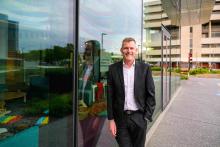

The inaugural State of Australia’s Children Report launched yesterday in Canberra should send shockwaves through every government, boardroom and household in the country. For decades we have comforted ourselves with the belief that Australian childhood is safe, carefree and universally prosperous but the data now tells a starkly different story.
Supported by the Minderoo Foundation and built on the Australian Children’s Wellbeing Index developed by UNICEF Australia and ARACY, the report maps six interconnected dimensions of wellbeing: being valued, loved and safe; having material basics; being healthy; learning; participating; and holding a strong sense of identity and culture.
Across every one of these domains the trend is deeply concerning. Childhood in Australia is increasingly defined not by joy and security, but by mental distress, financial worry and a diminishing sense of optimism about the future. Nearly half of 16–17-year-olds now cite housing and financial security as their greatest concern and alarmingly, children as young as twelve report the same fear. These are not early signs of maturity but rather adult pressures landing far too early.
Most concerning is the sharp decline in developmental outcomes in the early years. Only 53% of Australian children start school developmentally on track, a figure that drops to just 34% for Aboriginal and Torres Strait Islander children, marking the highest level of vulnerability since records began in 2009. This isn’t just a statistic, it is a strong predictor of school disengagement, adolescent mental illness and reduced employment prospects later in life.
The challenges intensify with age. Life satisfaction declines dramatically through the teenage years, and suicide remains the leading cause of death among young Australians. The data delivers a confronting truth: a nation defined by wealth and opportunity is failing to deliver an equal start in life and the consequences are already unfolding in real time.
The report reinforces what decades of neuroscience and developmental research have already proven: a child’s earliest experiences shape brain development and establish the foundation for lifelong health, learning and wellbeing. The evidence is clear, children flourish when they have stable relationships, safe and predictable environments, supportive communities, and access to high-quality early learning, education and healthcare. When families have the right support around them, children are more likely to thrive, and the benefits ripple beyond the household , strengthening schools, workplaces, productivity and the broader economy
For Minderoo Foundation CEO John Hartman, the findings demand national urgency.
“The State of Australia’s Children report is a stark wake-up call. When only half of our kids start school developmentally on track, and mental health distress is rising through adolescence, we are failing to give young Australians the foundation they deserve.”
Hartman argues that Australia’s response must pivot from late-stage crisis intervention to early prevention and support, an approach long backed by evidence but inconsistently funded.
“The evidence is clear, the first five years of life shape a child’s brain development and set the foundation for lifelong health and wellbeing. Investing early is not just the right thing to do; it’s the smart thing to do. Every dollar spent on prevention and early intervention reduces future costs and delivers better outcomes for children and society.”
This call is not philosophical; it is financial. Last year, a separate Minderoo analysis , compiled by The Front Project found that the cost of late intervention in Australia had surged nearly 50 per cent to $22.3 billion annually. Those costs reflect crisis services responding after the opportunity to change a trajectory has already passed , youth homelessness, acute mental health care, child protection responses and justice system interaction.
“Australia should be the best place in the world for children to grow up,” Hartman says. “But right now, too many are falling behind. We need bold reforms, such as a National Early Years Commission and a Children’s Data Framework, to ensure every child has the chance to thrive.”
A recurring theme throughout the report is data blind spots, gaps that leave some children invisible when policy decisions are made. ARACY CEO Prue Warrilow notes that while the report brings together measures of safety, identity, material wellbeing and learning, Australia still lacks linked and consistent longitudinal data across geography, culture and age. Without it, structural inequity becomes entrenched not by intent, but by omission.
What makes the findings more confronting is that children themselves are articulating what they need. In workshops across the country, even three-year-olds expressed through drawings and stories a vision of safety, peace, support and connection. Older children overwhelmingly identified family and friends as their strongest lifelines. More than one third of teens said that if they were in charge of the country, they would increase financial support for struggling families and remote communities.
If the report is a warning, it is also a roadmap. It shows that Australia’s children are not lacking in capability or resilience but rather in systems that support growing up well. High quality early learning, access to culturally safe family services, accessible mental healthcare, and coordinated prevention programs are not soft social investments, they are the backbone of future national productivity.
For business leaders, policymakers and philanthropists alike, the implications are clear. The future of Australia’s workforce, economy and social cohesion is being shaped now in homes, preschools and communities, not just universities and workplaces.
The challenge is not whether we can afford to act. It is whether we can afford not to.
Australia does not lack resources, capability or intent. What it lacks is coordination, accountability, and urgency. The State of Australia’s Children Report makes that plain and Minderoo Foundation is unapologetically pushing for reforms that match the scale of the problem.














